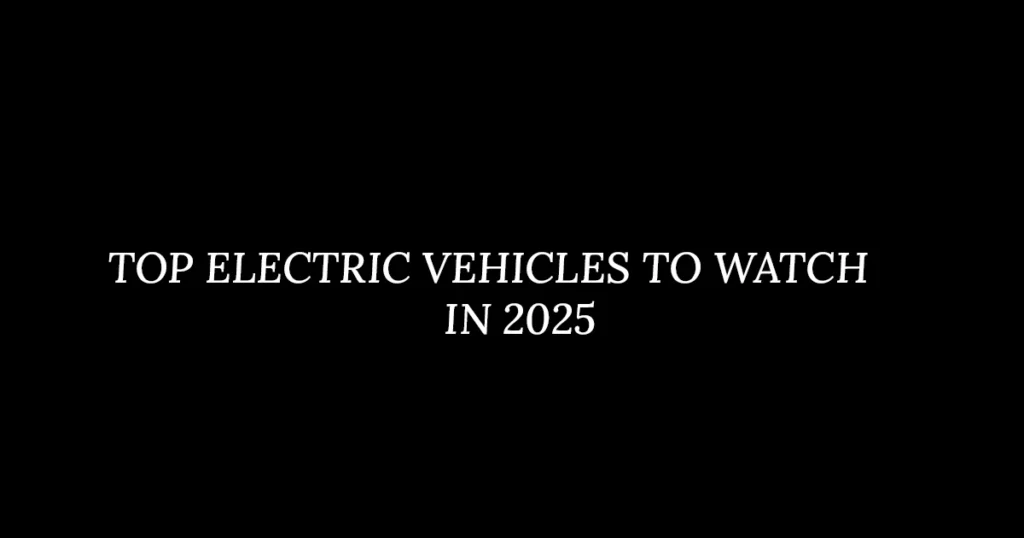How to Choose the Perfect Car for Your Lifestyle: A Comprehensive Guide
Your car is more than a vehicle it’s a lifestyle companion, seamlessly adapting to your daily demands while reflecting your values and aspirations. Whether navigating city streets, embarking on road trips, or shuttling a growing family, the right car becomes an extension of who you are.
Choosing the right car is a decision that transcends aesthetics or trends. It impacts your safety, ensuring peace of mind for you and your passengers. It shapes convenience, aligning with your commute, hobbies, and family needs. Financially, it balances upfront costs with long-term affordability, while environmentally, it lets you contribute to a sustainable future. This guide empowers you to make a choice that harmonizes practicality, passion, and responsibility.
From evaluating your unique lifestyle requirements to comparing models and test-driving options, this guide breaks down the process into actionable steps. You’ll explore budgeting strategies, weigh environmental considerations, and learn how to avoid common pitfalls all culminating in a confident, well-informed decision that puts you in the driver’s seat of your ideal car.
Assess Your Lifestyle Needs
Daily Commute
Your daily commute shapes your vehicle choice. Consider:
- Distance and Traffic : Long commutes may prioritize fuel efficiency (e.g., hybrids like the Toyota Prius) or comfort features (e.g., adaptive cruise control). In heavy traffic, maneuverability matters compact cars or hybrids with electric-only modes (e.g., Honda Fit) excel in cities.
- Terrain : Frequent highway driving? Opt for stable, powerful engines (e.g., sedans like the Subaru Legacy). Rough or snowy roads? All-wheel drive (AWD) SUVs (e.g., Subaru Forester) or trucks (e.g., Ford F-150) add safety.
- Public Transit Alternatives : If reliable, delay car ownership. Use apps like Citymapper to compare costs. If a car is essential, prioritize reliability and low upkeep (e.g., Toyota Corolla).
Family Requirements
- Seating Capacity : Growing families may need 3-row SUVs (e.g., Honda Pilot) or minivans (e.g., Chrysler Pacifica). Check child-friendly features like sliding doors and rear-seat entertainment.
- Safety : Look for top crash-test ratings (IIHS Top Safety Pick+) and features like automatic emergency braking, rear cross-traffic alert, and ISOFIX anchors for car seats.
- Cargo Space : Measure stroller/gear needs. Wagons (e.g., Volvo V60) or SUVs (e.g., Kia Sorento) offer versatile storage.
Hobbies/Interests
- Outdoor Activities : Campers or bikers might prefer SUVs with roof racks (e.g., Jeep Grand Cherokee) or trucks with beds (e.g., Toyota Tacoma).
- Towing/Hauling : Boats or trailers require vehicles with high towing capacity (e.g., Chevrolet Silverado for 10,000+ lbs). Check payload ratings for gear-heavy hobbies.
Environmental Values
- Eco-Friendly Options : EVs (e.g., Tesla Model 3) offer zero emissions but need charging access. Hybrids (e.g., Toyota RAV4 Hybrid) balance range and efficiency. Diesel options (e.g., Mazda CX-5) suit long-distance drivers.
- Incentives : Research tax credits (up to $7,500 for EVs in the U.S.) and state rebates.
Set Your Budget
Upfront Costs
- New vs. Used : New cars offer warranties but lose 20% value in Year 1. Certified Pre-Owned (CPO) vehicles (e.g., Lexus CPO) provide balance lower cost, extended warranties.
- Depreciation : Avoid models with rapid value loss (e.g., luxury cars). Check Kelley Blue Book for resale trends.
Ongoing Expenses
- Insurance : Sporty cars (e.g., Subaru WRX) cost more to insure than sedans. Compare quotes via Geico or Progressive.
- Maintenance : Luxury brands (e.g., BMW) often have higher repair costs. Prioritize models with free maintenance programs (e.g., Mercedes-Benz).
- Fuel : Calculate annual costs using EPA ratings. A 25 MPG car driving 15,000 miles/year at 3/galloncosts 1,800 annually.
Financing Options
- Loans : Aim for 20% down, 4-year terms.
- Leases : Ideal for tech lovers who upgrade often. Note mileage limits (e.g., 12,000/year) to avoid fees.
- Cash Purchase : Avoids interest but ties up funds. Consider if you can afford ~10-20% of your savings.
Tips for Negotiating Deals
- Research : Use Edmunds or Consumer Reports to gauge fair prices.
- Timing : Shop end-of-month/quarter when dealers hit sales targets.
- Leverage Offers : Pit dealers against each other with written quotes.
- Walk Away : Be prepared to leave if terms aren’t met often sparks better offers.
- Check Fees : Scrutinize “dealer add-ons” (e.g., paint protection) that inflate costs.
By aligning your vehicle choice with lifestyle and budget, you’ll find a car that fits both your needs and wallet. Test drive options, crunch numbers, and prioritize long-term value over impulse!
Expanded Details on Vehicle Research, Performance, and Safety
Research Vehicle Types (Expanded)
Sedans/Coupes
- Subcategories :
- Compact Sedans (e.g., Honda Civic, Toyota Corolla): Affordable, fuel-efficient, ideal for solo drivers or small families.
- Midsize Sedans (e.g., Toyota Camry, Honda Accord): More power and space, balancing comfort and practicality.
- Luxury Sedans (e.g., Mercedes-Benz E-Class, Tesla Model 3): Premium interiors, advanced tech, and superior ride quality.
- Coupes (e.g., Ford Mustang, Hyundai Veloster): Sportier designs, often with two doors and sharper handling.
SUVs/Crossovers
- Sizes :
- Compact (e.g., Mazda CX-5, Subaru Forester): Agile for cities, decent cargo space.
- Midsize (e.g., Toyota RAV4, Honda CR-V): Popular for families, offering 3rd-row seating options.
- Full-Size (e.g., Chevrolet Tahoe, Ford Explorer): Maximum passenger/cargo capacity.
- Off-Road vs. On-Road :
- Off-Road SUVs (e.g., Jeep Wrangler, Toyota 4Runner): High ground clearance, rugged suspension, 4WD.
- On-Road Crossovers (e.g., Lexus RX, Audi Q5): Smooth ride, car-like handling.
Trucks
- Configurations :
- Light-Duty (e.g., Ford F-150, Ram 1500): For daily driving and light towing.
- Heavy-Duty (e.g., Chevrolet Silverado HD, Ford Super Duty): Towing/hauling over 10,000 lbs.
- Bed Sizes : Short (5.5 ft), Standard (6.5 ft), Long (8 ft).
- Special Features : Towing packages, bed extenders, integrated toolboxes.
Hybrids/EVs
- Hybrid Types :
- Standard Hybrid (e.g., Toyota Prius): Gas engine + electric motor; no plug-in required.
- Plug-In Hybrid (PHEV) (e.g., Mitsubishi Outlander PHEV): Electric-only range (20–50 miles) + gas backup.
- EVs (e.g., Tesla Model Y, Ford Mustang Mach-E):
- Range : 200–400+ miles per charge.
- Charging : Level 2 (home) vs. DC Fast Charging (public stations).
- Tax Credits : Up to $7,500 in the U.S. (varies by model and manufacturer).
Minivans
- Key Features :
- Stow ‘n Go Seats (Chrysler Pacifica): Seats fold into the floor for instant cargo space.
- Entertainment Systems : Built-in screens, Wi-Fi, and rear climate controls.
- Sliding Doors : Power-operated for easy access.
Sports Cars/Luxury Vehicles
- Performance Categories :
- Sports Cars (e.g., Porsche 911, Chevrolet Corvette): High horsepower, rear-wheel drive, track-ready handling.
- Luxury Vehicles (e.g., BMW 7 Series, Lexus LS): Quiet cabins, massage seats, premium audio (e.g., Burmester, Mark Levinson).
- Luxury Brands : Mercedes-Benz, Audi, Lexus, Tesla (for EV luxury).
Prioritize Performance and Efficiency (Expanded)
Engine Types
- Gasoline :
- Pros : Widespread fuel availability, lower upfront cost.
- Cons : Lower MPG, higher emissions.
- Diesel :
- Pros : 20–30% better highway MPG, higher torque for towing.
- Cons : Higher initial cost, emissions regulations (e.g., DEF fluid requirements).
- Hybrid/EV :
- Hybrid : Ideal for drivers who want efficiency without range anxiety.
- EV : Zero emissions, lower “fuel” costs (electricity vs. gas), but charging infrastructure varies by region.
Fuel Economy
- Real-World vs. EPA Estimates :
- Cold weather, aggressive driving, and AC use reduce MPG.
- Apps like Fuelly track personalized MPG.
- Cost Calculations :
- Example: A 30 MPG car driving 15,000 miles/year at 3/galloncosts1,500 annually. A 50 MPG hybrid costs $900.
Tech Features
- Infotainment :
- Wireless Charging : Eliminates cables (e.g., Hyundai Kona).
- Over-the-Air Updates : Tesla and newer EVs add features remotely.
- Driver-Assist Tools :
- Adaptive Cruise Control (ACC) : Maintains speed and distance; some work in stop-and-go traffic.
- Parking Assist : Automated parallel/perpendicular parking (e.g., Ford BlueCruise).
Maintenance Costs
- Reliability Data :
- Consumer Reports : Scores vehicles on predicted reliability and owner satisfaction.
- J.D. Power : Measures problems per 100 vehicles (lower = better).
- Hybrid/EV Maintenance :
- No oil changes for EVs; regenerative braking reduces brake wear.
- Hybrid batteries often warrantied for 8–10 years/100,000 miles.
Safety First (Expanded)
Crash Test Ratings
- IIHS vs. NHTSA :
- IIHS : Focuses on collision avoidance (e.g., headlight performance, roof strength).
- NHTSA : Rates frontal, side, and rollover crashes (5-star system).
- Top Safety Picks :
- 2023 IIHS Winners: Subaru Outback, Hyundai Tucson, Volvo XC40.
Advanced Safety Tech
- Collision Prevention :
- AEB with Pedestrian Detection : Scans for people/cars (standard on most 2023+ models).
- Rear Cross-Traffic Alert : Warns of approaching vehicles while reversing.
- Driver Monitoring :
- Drowsiness Detection : Sensors monitor steering inputs (e.g., Mercedes Attention Assist).
- Camera-Based Systems : Ensure drivers aren’t distracted (e.g., Cadillac Super Cruise).
Child Safety
- LATCH System :
- Lower Anchors and Tethers for Children; check ease of access (some vehicles have “LATCH guides”).
- Rear-Seat Reminders :
- Alerts if a child is left in the back (e.g., GMC’s Rear Seat Reminder).
Additional Considerations
- Night Vision : Uses thermal imaging to detect pedestrians/animals (e.g., Audi Night Vision).
- 360-Degree Cameras : Eliminate blind spots during parking (e.g., Nissan Around View Monitor).
Tips
- Test Drives : Evaluate acceleration, braking, and visibility in real-world conditions.
- Resale Value : Trucks/SUVs often retain value better than sedans.
- Budget : Factor in insurance costs (sports cars cost more to insure) and depreciation.
By diving deeper into these areas, you’ll align your choice with both practical needs and personal preferences, ensuring a vehicle that serves you well for years.
Test Drive and Evaluate (Expanded)
A test drive is your opportunity to scrutinize a vehicle’s fit for your lifestyle. Go beyond a quick spin—test it in scenarios mirroring your daily routine.
Comfort
- Seat Ergonomics :
- Adjustability : Test seat height, lumbar support, thigh extension, and headrest positioning. Heated/ventilated seats matter in extreme climates.
- Material Quality : Leather vs. cloth consider breathability, durability, and ease of cleaning (e.g., spills with kids/pets).
- Driver Fatigue : Drive for 30+ minutes to assess if the seat maintains support during long trips.
- Visibility :
- Blind Spots : Check over-the-shoulder visibility and test blind-spot monitoring systems (if equipped).
- Pillar Obstruction : Note if thick A-pillars block crosswalks or intersections.
- Parking Aids : Use backup cameras, 360-degree views, or parking sensors to gauge ease of maneuvering.
- Cabin Noise :
- Highway Driving : Test at 60+ mph listen for tire roar, wind noise, or rattles.
- Sound Insulation : Luxury cars often use acoustic glass; compare with mainstream brands.
Handling
- Real-World Scenarios :
- Hills/Inclines : Test acceleration uphill and braking downhill. For manual cars, assess clutch bite and gear shifts.
- Tight Spaces : Parallel park in a narrow spot. Test turning radius in a cul-de-sac or U-turn.
- Rough Roads : Drive over speed bumps, potholes, or gravel to evaluate suspension comfort.
- Emergency Maneuvers : Safely test sudden lane changes or sharp braking (empty parking lot).
- Steering Feedback :
- Does the wheel feel precise (sporty cars) or overly light (luxury cruisers)?
- Test variable steering modes (e.g., “Comfort” vs. “Sport”).
Cargo Space
- Practical Testing :
- Bring your largest suitcase, golf clubs, or stroller to see if they fit.
- Measure trunk dimensions (width, depth, height) and compare to your needs.
- Versatility : Fold rear seats to check for flat loading floors. Look for underfloor storage or grocery hooks.
- Roof Rails : If hauling bikes/kayaks, test roof rack compatibility.
User-Friendly Controls
- Infotainment System :
- Test touchscreen responsiveness (laggy systems frustrate daily use).
- Check for physical buttons for climate control (easier to adjust while driving).
- Voice Commands : Try changing the radio station or inputting a destination hands-free.
- Wireless Features : Test Apple CarPlay/Android Auto connectivity and wireless charging pads.
- Driver-Assist Tech :
- Test adaptive cruise control, lane-keeping assist, and automatic emergency braking.
- Ensure alerts (e.g., forward collision warnings) aren’t overly sensitive.
Research Resale Value and Reliability (Expanded)
Depreciation Rates
- High-Retention Brands :
- Toyota (Corolla, RAV4), Honda (CR-V, Civic), Subaru (Forester), and Lexus/Toyota hybrids retain ~50–60% value after 5 years.
- Luxury Cars : BMW, Mercedes, and Audi often depreciate 50–70% in 5 years due to repair costs.
- EVs : Tesla Model 3/Y hold value better than older EVs (e.g., Nissan Leaf).
- Tools : Use Kelley Blue Book , Edmunds , or Consumer Reports to compare 5-year depreciation projections.
Warranty Coverage
- Bumper-to-Bumper (B2B) : Covers most components (3 years/36,000 miles avg.).
- Powertrain : Covers engine/transmission (5–10 years/60,000–100,000 miles).
- EV-Specific Warranties : Battery coverage (8–10 years/100,000 miles for Tesla).
- Extended Warranties : Consider for complex cars (e.g., hybrids, luxury brands). Read the fine print on deductibles and exclusions.
Owner Reviews
- Forums/Social Media :
- Reddit : Subreddits like r/Cartalk or brand-specific forums (e.g., r/tesla).
- Facebook Groups : Search for “[Model] Owners Club” to find honest feedback.
- YouTube : Long-term reviews from channels like Scotty Kilmer (mechanic) or Consumer Reports .
- Recurring Issues : Look for patterns (e.g., Mazda CX-5 infotainment glitches, Ford F-150 transmission complaints).
Consider Long-Term Needs (Expanded)
Future Family Plans
- Third-Row Seats : Test accessibility (e.g., Honda Odyssey’s “Magic Slide” seats vs. cramped SUV third rows).
- Child Safety : Check LATCH anchor ease, rear door openings, and rear-seat climate controls.
- Pet-Friendly Features : Washable floors, spill-resistant upholstery, or pet barriers.
Job Changes
- Commute Shifts :
- If moving to a city, prioritize fuel efficiency (e.g., Hyundai Ioniq Hybrid) or compact size (Honda Fit).
- For rural jobs, consider AWD (Subaru Outback) or off-road capability (Jeep Wrangler).
- Remote Work : If home-based, a smaller car may suffice, but frequent client visits might require a professional-looking sedan (Toyota Camry).
Technology Upgrades
- EV Readiness :
- Ensure home charging compatibility (Level 2 charger installation costs).
- Check for bi-directional charging (e.g., Ford F-150 Lightning powers your home).
- Over-the-Air Updates : Tesla and Rivian offer feature upgrades post-purchase.
- Infotainment : Look for Android Auto/CarPlay, USB-C ports, and wireless updates to avoid obsolescence.
Tips :
- Negotiate : Use research to leverage better deals (e.g., mention lower resale projections for luxury cars).
- Pre-Purchase Inspection : For used cars, hire a mechanic to check for hidden issues.
- Future-Proofing : Balance cutting-edge tech (self-driving features) with practicality (repair costs).
By diving deep into these areas, you’ll avoid costly mistakes and choose a car that evolves with your life.
Make the Decision: A Structured Approach to Choosing Your Next Car
After researching and test-driving, you’ve narrowed your options to 2–3 vehicles. Now, it’s time to make the final decision. Here’s how to systematically evaluate contenders and ensure confidence in your choice.
Compare Final Contenders: Use a Pros/Cons List
A detailed pros/cons list helps clarify trade-offs. Dive deeper into these categories:
Quantify Costs
- Upfront Price : Compare MSRPs, but factor in incentives (e.g., manufacturer discounts, trade-in values, or low APR financing).
- Long-Term Costs :
- Fuel : EVs save ~$800/year vs. gas cars (e.g., Tesla Model 3 vs. Honda CR-V).
- Maintenance : EVs lack oil changes and transmissions; hybrids/gas cars may cost more over time.
- Insurance : Check rates for models (e.g., sports cars often cost more to insure than sedans).
- Resale Value : Trucks/SUVs (e.g., Toyota RAV4) typically retain value better than sedans after 5 years.
Lifestyle Fit
- Daily Commute : Hybrids (e.g., Toyota Prius) excel in stop-and-go traffic; fuel-efficient sedans (e.g., Hyundai Elantra) suit highway drives.
- Family Needs : Test cargo space with your gear (e.g., strollers, luggage). Measure trunk dimensions (e.g., Subaru Outback vs. Kia Sorento).
- Adventure Readiness : For off-roading, compare ground clearance, AWD systems, and towing capacity (e.g., Jeep Wrangler vs. Ford Bronco).
Tech & Safety
- Driver-Assist Features : Prioritize adaptive cruise control, lane-keeping assist, or automated emergency braking.
- Infotainment : Test Apple CarPlay/Android Auto compatibility, voice commands, and screen responsiveness.
Weighted Scoring
Assign points (1–10) to priorities like budget (30% weight) , safety (25%) , and comfort (20%) . Total scores to reveal the winner.
Example :
- EV (Tesla Model 3) :
Pros : $7,500 tax credit, low maintenance, instant torque.
Cons : 300-mile range (requires planning), higher upfront cost. - Gas SUV (Honda CR-V) :
Pros : Spacious cabin, reliable resale value, no range anxiety.
Cons : Lower MPG (28 city/34 highway), higher emissions.
Check Incentives: Tax Credits, Rebates, and Promotions
Incentives can sway your decision:
- Federal EV Tax Credit : Up to $7,500 for eligible EVs (verify IRS guidelines; phased out for Tesla/GM).
- State/Local Rebates : California offers 7,000 for EVs; Colorado gives 5,000 for certain models.
- Dealer Promotions :
- 0% APR financing (e.g., 60-month loans).
- Trade-in bonuses (e.g., 1,000–3,000 extra for your old car).
- Seasonal deals (end-of-month/quarter discounts).
Pro Tip : Stack incentives ! Combine a tax credit, dealer rebate, and manufacturer discount for maximum savings.
Final Test Drive: Ensure Confidence
Spend 2+ hours testing the top contender in real-world scenarios:
- Simulate Real Use :
- Drive highways and city streets to assess noise, comfort, and handling.
- Load your family/gear to test space.
- Pair your phone and test voice commands.
- Watch for Dealbreakers : Poor visibility, clunky infotainment, or harsh suspension.
- Involve Others : Bring family to evaluate backseat space or child seat installation.
Conclusion: Align Your Choice with Your Life
Your car is a long-term investment. Prioritize alignment with your lifestyle:
- Commuters : Fuel efficiency (e.g., Toyota Prius).
- Families : Space and safety (e.g., Kia Telluride).
- Adventurers : Off-road capability (e.g., Subaru Outback).
Revisit Priorities as Needs Evolve :
- New baby? Swap a coupe for an SUV with ISOFIX anchors.
- Working remotely? Downsize to a compact EV.
- Retiring? Focus on comfort and safety over performance.
Call to Action :
- Share this guide with a friend debating an EV vs. hybrid!
- Still unsure? Describe your dilemma we’ll crowdsource advice!
This framework balances logic and practicality, ensuring your choice evolves with your life. Drive confidently!
for more visit Mavlluxury




